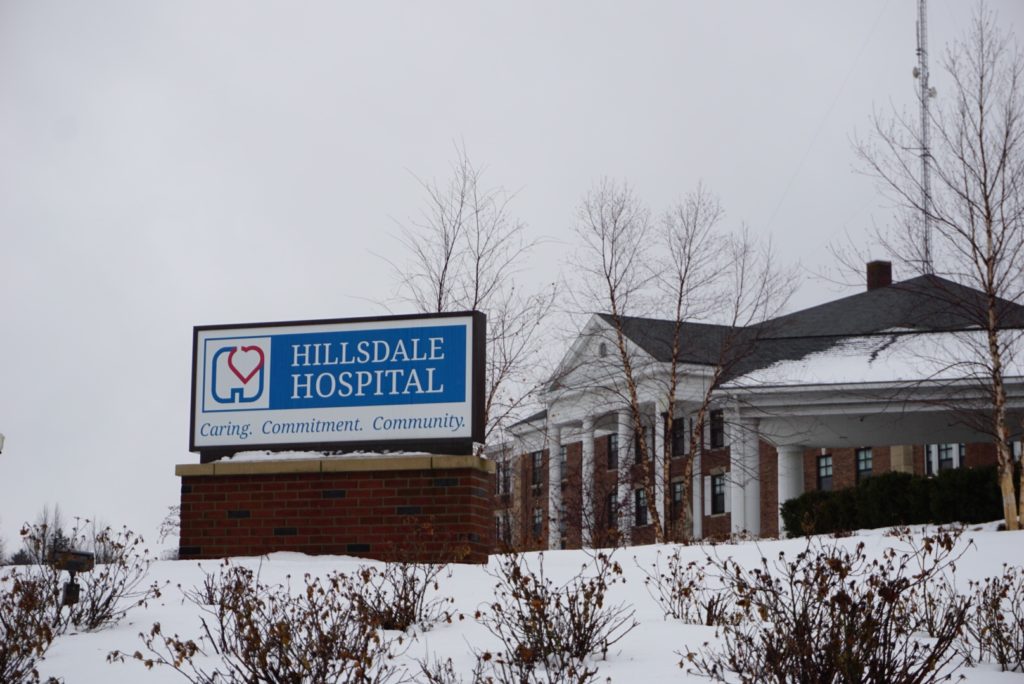
On Jan. 1, hospitals across the nation published price lists and charges for medical procedures on their websites to comply with a new transparency regulation from the Centers for Medicare and Medicaid Services, a subsection of the Department of Health and Human Services.
Hillsdale Hospital released a list of its standard charges on their website under “patient info” and “pricing transparency.” Patients can view typical charges for specific procedures.
A CMS spokesperson said the regulation was intended “to make the information available to individuals and let them make the decision that works best for them.”
Now, anyone can go to hospital websites and download lists of medical procedures with attached prices. But listing standard names and prices of medical procedures doesn’t provide patients with useful information about their specific needs.
“The descriptions are horrible because when those descriptions were built, it was more of an internal description, not knowing it would be going out to the public,” said Mark Gross, chief financial officer of Hillsdale Hospital.
Hillsdale Hospital’s price list includes such entries as “Atherosclerosis without MCC” for $4,694 and “Laparoscopic Cholecystectomy without C.D.E. with MCC” for $24,578.67. The average medical consumer may not understand these terms and stands even less of a chance of knowing which procedure he or she may actually need.
“At the end of the day, that list is not going to help the typical patient,” Gross said.
But even if most people could understand the descriptions, they wouldn’t gain useful information from the listed prices.
“We wouldn’t want a patient to look at that list and see an item that’s $1,000 and expect to pay $1,000,” Gross said.
The hospital would consider the patient’s ability to pay the bill and would open its financial assistance program for the patient’s use.
Hospitals sometimes use their sticker prices as a negotiating point with insurance companies.
“It’s really the starting point for some insurance companies on how we get paid,” Gross said. “Some of our insurance companies pay us a percentage charge, so that’s really where the charges matter.”
Because insurance companies have different rates with different hospitals, there could even be a scenario where a patient pays more out of pocket at a hospital that has the lowest sticker price. If his or her insurance doesn’t have as good a deal at the hospital, the patient ends up paying more. Sticker prices don’t accurately predict final costs that patients pay.
The prices, rather than describe accurate prices to consumers, serve to obscure true costs and aid the hospitals in negotiations. Gross recommended patients speak directly to hospital staff.
“We have financial counselors who are available to help people understand their obligation with the amount they owe us,” Gross said.
But the CMS requirement that hospitals publish price lists could be a great step toward transparency and competitiveness.
“A requirement to publish standard pricing menus for these services online will allow patients to better plan financially and even shop around for better prices,” said Lindsay Killen, vice president of strategic outreach and communications at the Mackinac Center for Public Policy.
She said these factors create greater accountability to patients and empower individuals to have more control over their healthcare options.
But if prices would more accurately reflect out-of-pocket costs to consumers, price and quality could both improve.
Arthur Laffer, who sits on the boards of several medical companies, said in a talk at Hillsdale College on Monday that to lower prices and improve care, “We need to publish lists of prices for doctors and hospitals and need doctor performance published.”
Gross said that cost calculators where patients could input their insurance companies and the procedure they need could give patients accurate information on out-of-pocket costs.
“But I just don’t think listing all these charges on a website is helping the situation,” Gross said. It has the potential to confuse patients more.”

